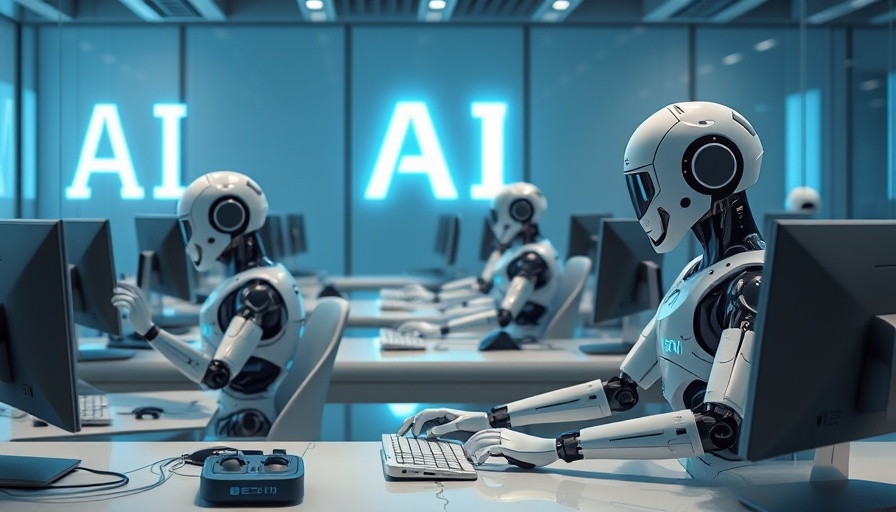
The Uncertain Future of Jobs in the Age of AI
The rise of artificial intelligence (AI) is reshaping industries at an unprecedented pace. Recent announcements from major tech players like CrowdStrike and IBM reflect a wave of job losses, which, despite concerns, could also unveil new opportunities in tech roles. As machines take over tasks once performed by humans, it prompts a broader discussion on the implications for future employment.
Automation vs. Employment: The Balancing Act
The tech sector has been significantly affected as companies streamline operations through AI. CrowdStrike, for instance, just cut around 500 jobs, about 5% of its workforce, citing efficiency and an evolving threat landscape as pivotal to this decision. CEO George Kurtz emphasized that AI not only enhances productivity but also helps innovate faster—a sentiment echoing throughout the industry.
AI's role is transforming traditional job functions. While some positions may vanish, like those in certain HR roles at IBM replaced by AI-enabled agents, it does not equate to an overall decline in employment within the firm. Reportedly, IBM's workforce has increased due to new hires in tech-centric roles, demonstrating a shift rather than a reduction in job opportunities.
How AI is Reshaping the Job Market
While the prospect of job loss can be daunting, it’s essential to recognize the opportunities AI creates within tech fields. As organizations pivot to digital solutions, there is an evident need for skilled workers in programming, sales, and other areas. In fact, IBM's CEO Arvind Krishna advocates for increased federal funding for AI research and development, emphasizing the importance of retaining job creation in these evolving sectors.
Community Resilience: The Human Spirit in Tech
This transition isn't just about numbers; it's also about people and communities affected by these shifts. Local businesses and workers must adapt to this new landscape, where skilled innovation is key. With support and resources, communities can navigate the challenges posed by AI, emerging resilient and stronger than before.
Future Predictions: Jobs in Demand
As we look toward the future, the demand for skilled professionals will likely grow in areas such as AI development, data analytics, and cybersecurity. These fields will not only require technical know-how but also creative problem-solving and adaptability—skills that human workers bring to the table.
An Empowered Workforce: The Role of Education
Educational initiatives can play a significant role in bridging the gap between current job demands and future needs. Communities can focus on upskilling programs that equip individuals with relevant technological skills, fostering an empowered workforce ready to tackle the challenges of tomorrow's job market.
The Bigger Picture: AI’s Impact on Society
While technology will continuously evolve, it is crucial to remain optimistic about employment transformations. AI's growth can spur new industries and roles, promoting a culture of innovation. Technology should be seen as an ally, creating pathways for individuals to thrive in their careers. Embracing these changes with an open mindset can help us build the future we envision.
Communities must remember—the essence of innovation lies not only in the technologies we create but in the collaborative spirit that binds us together. By investing in education, supporting local businesses, and fostering adaptable mindsets, we can navigate the challenges of AI, ensuring that no one is left behind.
To stay informed about the evolving job landscape and discover how to prepare for future opportunities, consider subscribing to local newsletters and joining community workshops that discuss navigating the world of technology.
 Add Row
Add Row  Add
Add 




Write A Comment